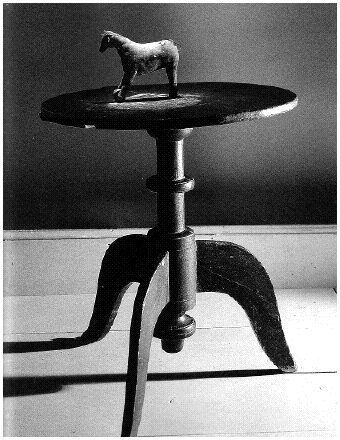Canada's Doukhobors,
Hutterites, Mennonites,
And Ukrainians
John Fleming,
Michael Rowan
(University of Alberta Press)

It was as a response to "Manifest Destiny" from south of the border that the Canadians, in the late part of the 19th Century, set about populating the western part of their country with the likes of the Doukhobors. People from Eastern Europe were encouraged to pack up their old kit bags and migrate to the central and western parts of Canada. According to the editors of Folk Furniture, these were people who had an "urgent desire ... to find a homeland in which to live according to their spiritual beliefs and customs.
- The geographic similarity of Canada and Russia, two great northern spaces, may have been a further unconscious inducement to make such a trip into the unsettled lands and uncertainties of a country still in formation.
- but peasants with a strong sense of the land and systems of spiritual belief closely tied to natural and uncomplicated values.
Folk Furniture contains over a hundred photographs of the simple furniture of what some would call a simple people. In keeping with this "simplicity," the tables, chairs, cribs, benches, spoons, boxes and storage chests are presented here unadorned, complete with cracks, scratches, gouges, flaking paint, and fading colors.
At first I thought the authors might be putting us on, that they had gone through some junk yard, found thrown-out tables and chairs and whatnots, made dour photographs of them and then made up a pseudo- It is not without scholarly fault: The authors try, sometimes almost too diligently, to seek out all the roots of the styles represented in the photographs:The cabriole leg set at a 45° angle to the skirt of a table, the curves of shaped and fielded panels, the scalloped skirts of armoires and tables, and the moulded or cut-out cornices of cupboards and dressers all each the distant profiles of the Louis furniture of the seventeenth and eighteenth centuries.
